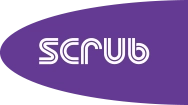The European Broadcast Union has on-going research into developing audio services for radio, TV and streaming, working in close collaboration with broadcasters, leading technology companies and industry standards organisations. The EBU’s Next Generation Audio (NGA) project provides a set of standards and formats with the aim of enhancing the listener experience of broadcast media. This project will impact how audio is delivered and, in the future, will be how broadcast audio content will be consumed.
The key building blocks of NGA are higher channel count audio formats, more efficient codecs, metadata and renders. The listener also requires local rendering and new user interfaces to interact with NGA. NGA supports cinema style immersive sound reproduction, as well as personalisation options, including the ability to switch dialogue language, alternative commentary options, listener control of mixing sound elements and enhanced audio description services.
Three next generation audio codecs have been standardised for delivery of these new media experiences to consumers: Dolby AC-4, DTS-UHD and MPEG-H. However, European public broadcasters have clearly stated their need for a common, open format for programme production and interchange. This has led to work by the EBU to develop the Audio Definition Model, ADM, a common definition of NGA metadata and rendering, offering the promise of authoring content that is suitable for all delivery platforms. “We believe the EBU initiative for ADM can really help the industry to scale personalised and immersive audio production. We’ve been pleased to collaborate to achieve interoperability of ADM, Dolby Atmos and Dolby AC-4,” commented Jason Power, Senior Director, Dolby.
“NGA is an exciting prospect for consumers and is being developed in collaboration between broadcasters, standards organisations and technology suppliers. Examples of this can be already be seen today. For instance the latest ProTools Ultimate 2020.12 features enhancements to ADM BWF exporting, to improve workflow efficiency and interoperability “states John Johnson Chief Technical Officer at HHB.
NGA supports trends in consumer listening such as the growth in streaming services to mobile devices, consumption on the move, AR and VR production and more sophisticated immersive audio. With this standardisation consumers can enjoy a more widespread use of these audio innovations. This would allow viewers to create their own mix of a sport event, choose the commentary language, home or away crowd noise. The commuter arriving home, able to switch a movie on to the large screen system with full cinema sound. It could help with those who have a hearing impairment rebalancing dialogue or switching on the audio description service.



